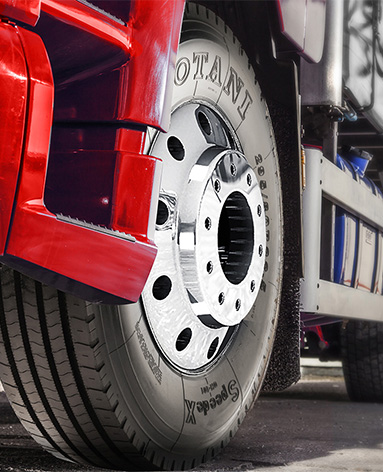Nov . 10, 2024 08:33 Back to list
Brake Drum Restoration Techniques for Optimal Performance and Longevity
Brake Drum Reconditioning A Comprehensive Guide
Brake systems are crucial components of any vehicle, ensuring safety and performance by allowing effective deceleration and stopping. One key element of the brake system is the brake drum, which plays an important role in enhancing braking efficiency. Over time, these drums can wear down or become damaged, warranting a process known as brake drum reconditioning.
Understanding Brake Drums
Brake drums work in conjunction with brake shoes to create the friction necessary to slow down or stop a vehicle. When the brake pedal is pressed, hydraulic pressure forces the brake shoes against the inner surface of the drum, generating friction. This friction converts kinetic energy into thermal energy, allowing the vehicle to slow down. Given the immense forces and heat generated during this process, brake drums experience significant wear and tear.
Signs That Your Brake Drums Need Reconditioning
Recognizing when brake drums need attention is essential for maintaining vehicle safety. Common signs include
1. Squeaking or Grinding Noises An audible noise can indicate that the brake shoes are worn down and possibly making contact with the drum. 2. Vibrations During Braking If you feel vibrations or pulsations when applying the brakes, this could mean that the drum is warped or unevenly worn. 3. Poor Braking Performance If the vehicle takes longer to stop or the brakes feel less responsive, it might be time to inspect the brake drums.
The Reconditioning Process
Brake drum reconditioning involves several steps, each aimed at restoring the drum to a safe and functional state
. Here’s an overview of the typical process1. Inspection The first step is a thorough inspection of the brake drums to check for wear, cracks, or any structural damage. This assessment helps determine whether reconditioning is viable or if a full replacement is necessary.
brake drum reconditioning

2. Machining If the drum is deemed unfit but not beyond repair, it may undergo machining. This process involves cutting the drum inner surface to remove any imperfections or warping, essentially restoring it to a smooth finish.
3. Cleaning After machining, the drums should be cleaned to remove any dust, debris, or contaminants that could interfere with braking performance. Proper cleaning ensures a good contact surface between the drum and brake shoes.
4. Balancing Some facilities may also balance the drums to eliminate any heavy spots that could cause vibrations during operation.
5. Final Inspection Once the reconditioning process is complete, a thorough inspection is necessary to ensure that all specifications are met for safe operation.
Benefits of Reconditioning Brake Drums
Reconditioning brake drums offers several advantages over outright replacement
- Cost-Effective Reconditioning is often less expensive than purchasing new drums, providing significant savings. - Environmental Benefits By reconditioning existing parts, you reduce waste and the need for new manufacturing, contributing to environmental sustainability. - Preservation of Vehicle Integrity Retaining the original components can help maintain the vehicle’s overall performance and integrity.
Conclusion
Brake drum reconditioning is an essential task for anyone looking to maintain their vehicle's braking system effectively. By recognizing the signs of wear, understanding the reconditioning process, and appreciating its advantages, vehicle owners can ensure that their braking system remains in optimal condition. Regular maintenance and timely reconditioning of brake drums are key to ensuring safety on the road. Always consult a professional mechanic if you suspect that your brake drums are in need of attention, as they can provide the expertise necessary for safe vehicle operation.
-
Your Brake Drum Man: Premium & Reliable Brake Drums for Sale
NewsAug.18,2025
-
ROR Web Development: Build Fast, Scalable, Secure Apps
NewsAug.17,2025
-
Scania Brake Drums: OEM Quality for Optimal Safety & Durability
NewsAug.16,2025
-
R.V.I: Advanced Remote Visual Inspection for Precision
NewsAug.15,2025
-
Discover HYUNDA: Innovative Vehicles, Equipment & Solutions
NewsAug.14,2025
-
R.V.I: Unlock Advanced Insights & Real-time Performance
NewsAug.13,2025
